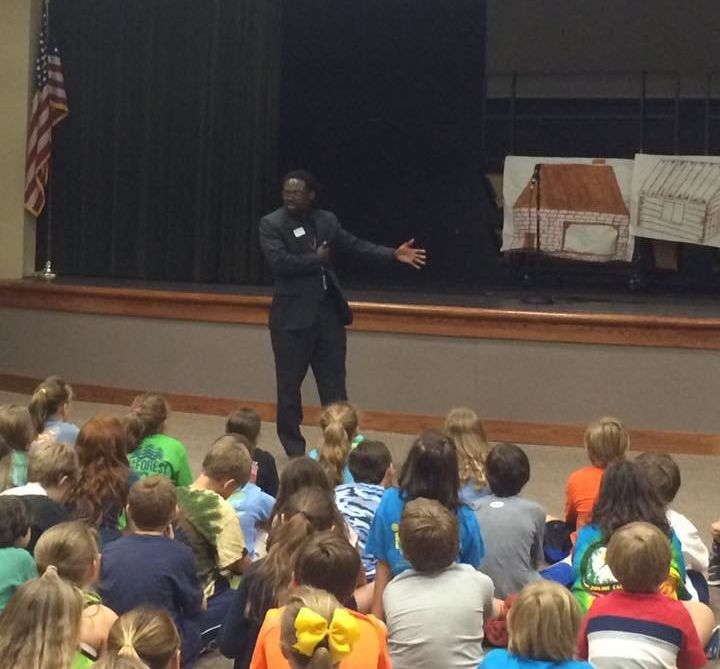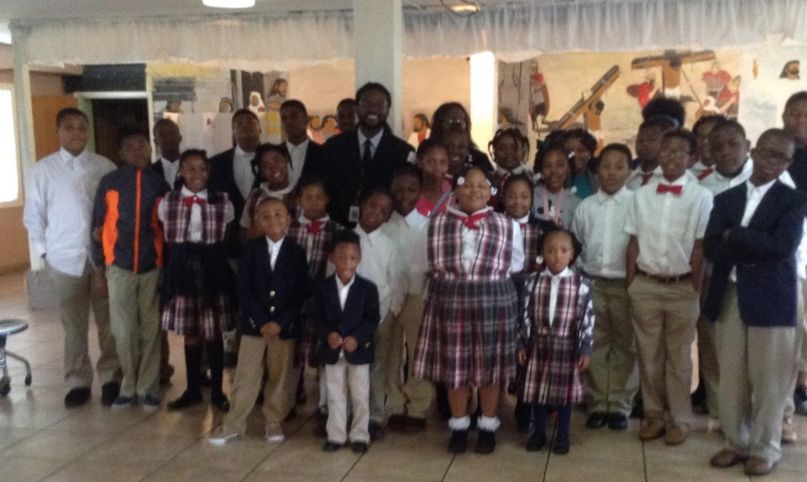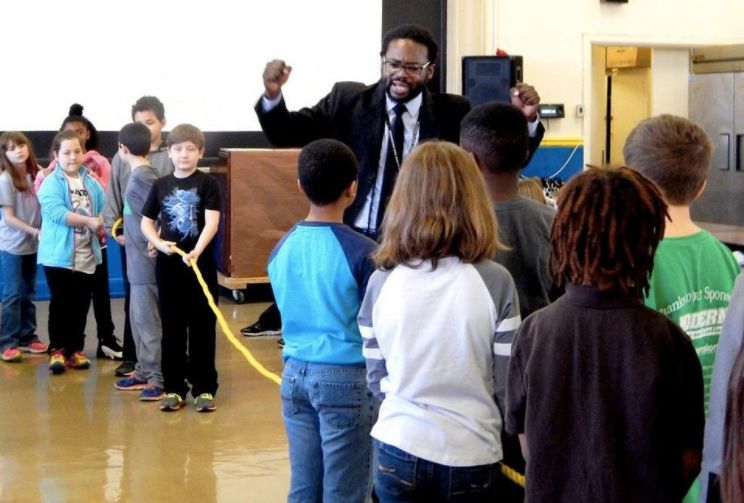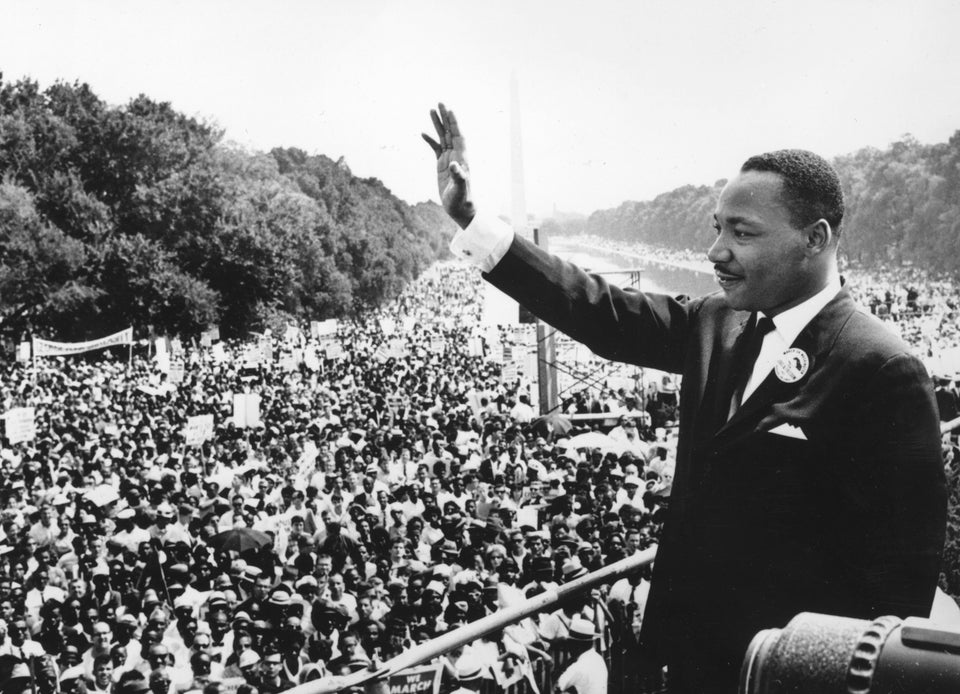For longtime Birmingham, Alabama, resident Charles Woods, the civil rights movement is not just an important moment from history ― it’s a lesson that carries through to the present day, and can help inform the next generation.
As the outreach coordinator for the Birmingham Civil Rights Institute, Woods visits classrooms across the state, teaching kids about the civil rights movement with interactive activities. He makes visits a handful of times per month, mostly to fourth grade classes in public schools, walking the kids through key moments in the movement that took place in Alabama, from the lunch counter sit-ins to Martin Luther King, Jr.’s “Letter from a Birmingham jail” to the Children’s Crusade march.
“It’s important for kids today to understand what happened in the past,” Woods told HuffPost. “I try to illustrate that at any age you can recognize what’s right and wrong, and you can stand up against things that are wrong.”
Pointing to the political climate in the United States today, Woods said he sees parallels between the civil rights era and some of the ways minority groups are seeing their rights threatened now, whether it be the Latino or Muslim communities facing hate and bigotry, or black Americans seeing their voting rights curtailed.
“They live in a climate right now where if they don’t pay attention, history could repeat itself,” Woods said of his young students. “The things going on with Muslims right now are very reminiscent of what happened with black people in the first half of 20th century.”
“If they don’t get involved, some things could happen and we’ll be 15 or 50 years back,” Woods added, “trying to claw ourselves back up to get back some of the gains we made with the civil rights movement.”

Just last week, the country marked the 54th anniversary of the 1963 bombing at 16th Street Baptist Church ― which is located around the corner from where the institute stands now. The bombing, orchestrated by Ku Klux Klan members, killed four little black girls and shocked the country, leading to the passing of the Civil Rights Act of 1964 and Voting Rights Act of 1965.
In one of Woods’ most popular classroom activities, he uses the game of tug-of-war to walk the kids through important events, including the church bombing. Placing kids on either end of the rope, he tells them that while people tend to think of the civil rights movement as a conflict between white and black people, at times it actually was more of a struggle between the “establishment” ― or those who wanted slower, incremental changes to policy ― and “freedom” ― or those who called for more radical, immediate change.
“Stand up when you see bullying, or when you see someone not tolerating someone because they look different than you.”
- Charles Woods
“I show them that after the four little girls died, with those images going across the country, even folks on the establishment side had a change of heart, so I take more [students] on freedom side,” Woods told HuffPost. “Then you pull the rope ― and freedom always wins.”
Woods then calls out to his students: “Who won?” They shout back, “Freedom!” He asks: “Was it an easy win?” They call back: “No!”
Woods talks students through some of the ways that the lessons from the civil rights movement can be applied today, even in their own lives.
“Stand up against injustice and intolerance,” Woods says. “Stand up when you see bullying, or when you see someone not tolerating someone because they look different than you.”

But teaching civil rights to kids is not always easy ― especially when they’re only 9- or 10-year-olds, and even more so when you’re a black man, Woods added.
He likes to kick off his sessions by telling students: “During the 1960s, Birmingham was the most segregated city in the country, and what I’m doing right now would be totally illegal ― a black man standing in front of a mixed group.”
America has come a long way since the legal racial segregation of the 1960s, but Birmingham still struggles with school and housing segregation today.
While the classrooms Woods visits around the state tend to be fairly diverse, he said, he has found himself at times being the only black person in the room ― and things can get uncomfortable.
In one of the first classes he ever taught over a year ago ― in a “very upper class” suburb of Birmingham, with mostly white students ― one little girl asked him, “Why did these people want to treat black people so bad?”
A little boy in that same session remarked that his family uses the Confederate flag ― which many in the African-American community see as a symbol of hate and segregation.
“We don’t think it has to do with slavery or oppressing black people. It just means we beat to our own drum and we’re rebels,” he said.
In yet another class, a child asked him whether Black Lives Matter was a terrorist organization.
“History is an always-occurring event ― it’s not just young people, but getting all people to understand we’re living in history right now.”
- Charles Woods
To answer such tough questions, Woods usually brings it back to the lessons of the civil rights movement.
“Whenever you see a black organization standing up for the rights they feel are being infringed upon, you get pushback and resistance,” Woods said he told the student who asked about Black Lives Matter. “When Martin Luther King Jr. first came onto the scene people weren’t behind him the way they are now ― when he was doing campaigns, people across the country thought he was an agitator, a rabble rouser.”
“So you may see organizations standing up for things they see as injustice,” Woods added. “People will push back and call them names and try to diminish what they’re trying to accomplish.”
Woods hopes to expand the program to reach even more students ― perhaps by using virtual tools to reach classrooms beyond the state. But as a nonprofit, the institute faces challenges in funding these initiatives.
“History is an always-occurring event ― it’s not just young people, but getting all people to understand we’re living in history right now,” Woods told HuffPost. “So we educate the present, about the past, to enhance the future.”

